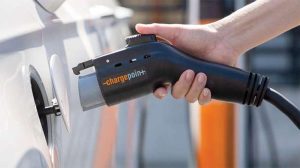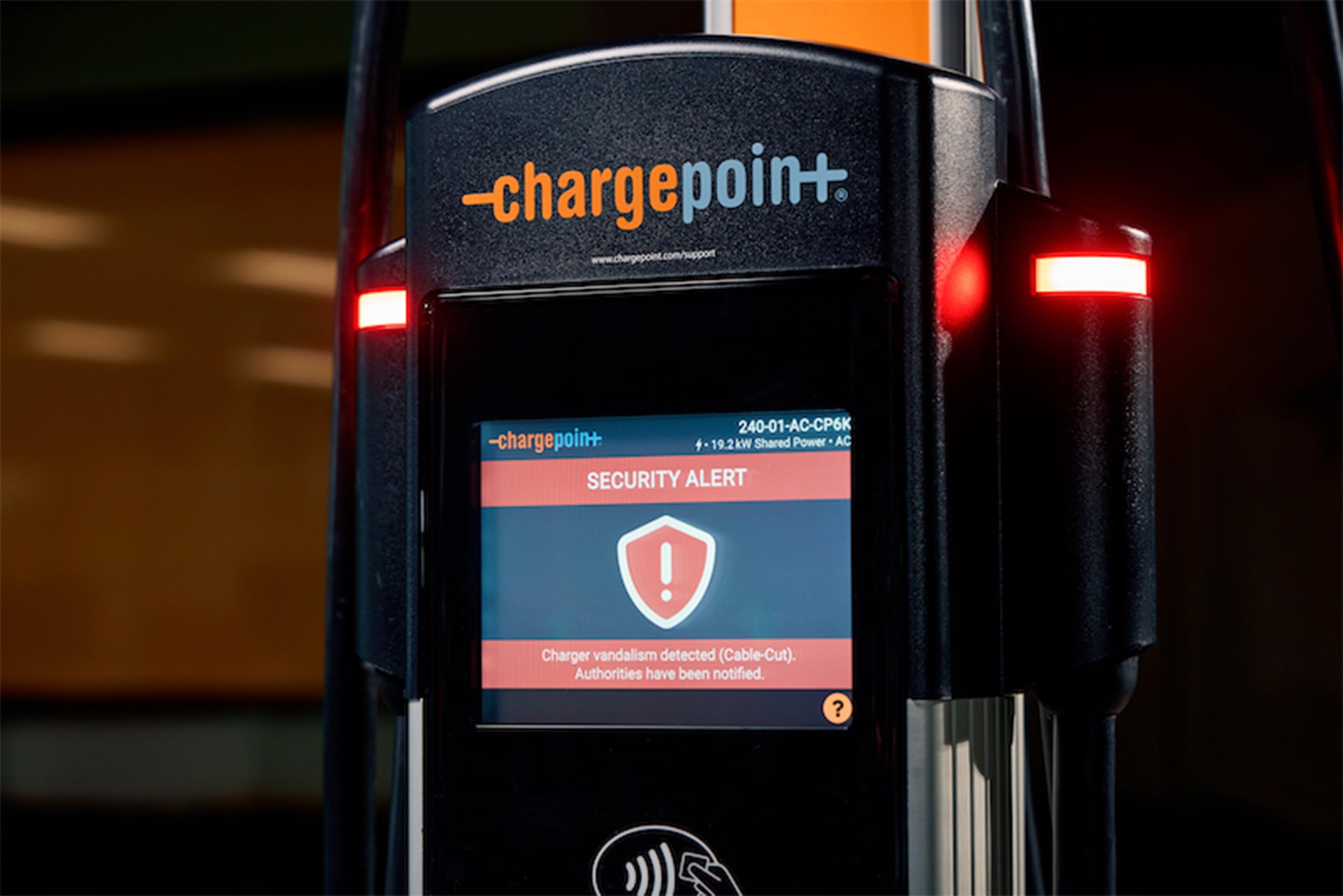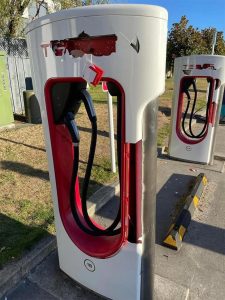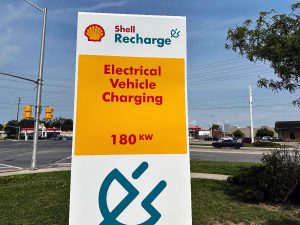Setting up a nationwide public charging network is a critical step to encourage the shift to battery-electric vehicles. But that effort is being hampered by vandals and thieves, some cutting charger cables to recycle their valuable copper. Now, however, at least one charging company is fighting back. Headlight.News has more.

Thieves and vandals have been stealing charger cables, often to sell them for their expensive copper core.
As an EV owner I can open this story from a personal note: a few months back I was taking a long drive in my Ford F-150 Lightning and wanted to ensure I had enough battery capacity to make it home. Unfortunately, when I pulled up to a remote charging station off I-75 I discovered that the cable had been cut, likely by a thief aiming to sell its valuable copper core to a recycler.
I was fortunate enough to have enough juice to move onto another station a few miles down the Interstate. But social media reports suggest quite a few other motorists aren’t so lucky. And with some experts describing the problem as an “epidemic,” charger companies have begun fighting back.
One of the largest, ChargePoint, is introducing new cut-resistant cables and alarms meant to deter vandals and thieves, while cameras are being installed at other locations to record criminal acts and help police track miscreants down.
The problem
There are 69,632 public EV charging stations in operation around the U.S. – about 15% more than a year ago – with 195,179 chargers, according to the latest data from the U.S. Department of Energy.
While there’s no hard data on the number of these facilities that have been targeted by vandals and thieves there’s a broad consensus that the problem has grown worse over the last couple years as chargers become ubiquitous. In some cases, experts believe, vandals may include those political opposed to the growth of the EV market, as well as federal and state sales incentives.
In other instances, perhaps the majority, thieves simply see a quick ways to get their hands on valuable metal, namely the thick copper wires at the center of charging cables. In 2020, copper cost as little as $2.15 a pound. That hit a peak of $5.06 in 2024, more recently settling in around $4.35. For thieves, a heavy cable might yield as much as $20 when sold to a scrapper. But for charger operators it can cost hundreds, perhaps more than a thousand to dispatch a crew to install a replacement – on top of lost revenues.
Squelching sales
The bigger issue is that EV owners can wind up discovering a charger – perhaps an entire station – is out of service with not enough power left to make it to another station.
As word of the problem grows, it is having a potential impact on EV sales growth, said Sam Abuelsamid, vice president of market research for Telemetry Insight,
“If car buyers don’t feel like they can reliably find a place to charge they’re not going to buy EVs,” he said. “Simple as that.”
More EV News
- New ChargePoint Plug Can Work with All EVs
- GM Teams with ChargePoint to Add Ultra-Fast Chargers
- Shell Shutting 1,000 Gas Stations to Shift to EV Charging
ChargePoint charges to the rescue

ChargePoint is rolling out new cut-resistant cables for its chargers, as well as anti-theft software.
“We do not view ourselves as victims of vandalism, but rather responsible for solving it, not only for our customers but for the industry,” said Rick Wilmer, CEO of ChargePoint. The California-based company claims to be the largest supplier to independently owned charging stations in the U.S.
ChargePoint has begun rolling out what it describes as “cut-resistant cables….specifically designed to deter cable theft.” They integrate new materials in the cable that can’t be easily snipped through – but which remain flexible enough to still allow motorists to plug in without hassle, the company claims.
“In addition, ChargePoint also announces the launch of ChargePoint Protect, a charger alarm system aimed at further increasing charging station security,” the company said in a statement. “ChargePoint Protect integrates a ChargePoint charger’s existing speakers, screens and lighting system to create a highly effective alarm system.
While chargers have to be upgraded to use the new cable, ChargePoint said the Protect system can be added to existing chargers at no cost using cloud-based software.
The company also said “We are sharing the technology to combat vandalism in the most aggressive way possible with the aim to eliminate charger reliability as a hinderance to EV adoption.”
Charger reliability
In his comments, Wilmer raised a broader issue. Vandalized chargers are just part of the problem. A recent study by the University of California – Berkeley pointed out that as much as a third of the individual chargers in the San Francisco Bay Area may be out of service or performing below rated capacity on any given day.
That’s been reflected in other studies – and by anecdotal social media posts. Indeed, I discovered this during a 500-mile round trip I took last summer in a Mercedes-Benz EQE SUV I was reviewing. I stopped several times along the way and found two chargers that wouldn’t activate. While there were other chargers at each station, the ones I plugged into operated well below their rated capacity. At a Shell Recharge station I never saw power levels go above 65 kilowatts, barely a third of the 180 kWs that the station boasted in a large sign.
The public charging industry needs to get things fixed, stressed analyst Abuelsamid. “Even if we spend billions of dollars to install hundreds of thousands of chargers out there, if they can’t be made to work right we might as well not spend the money at all.”









0 Comments